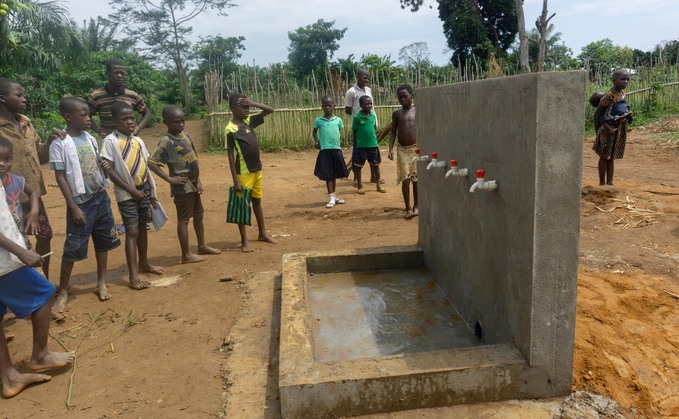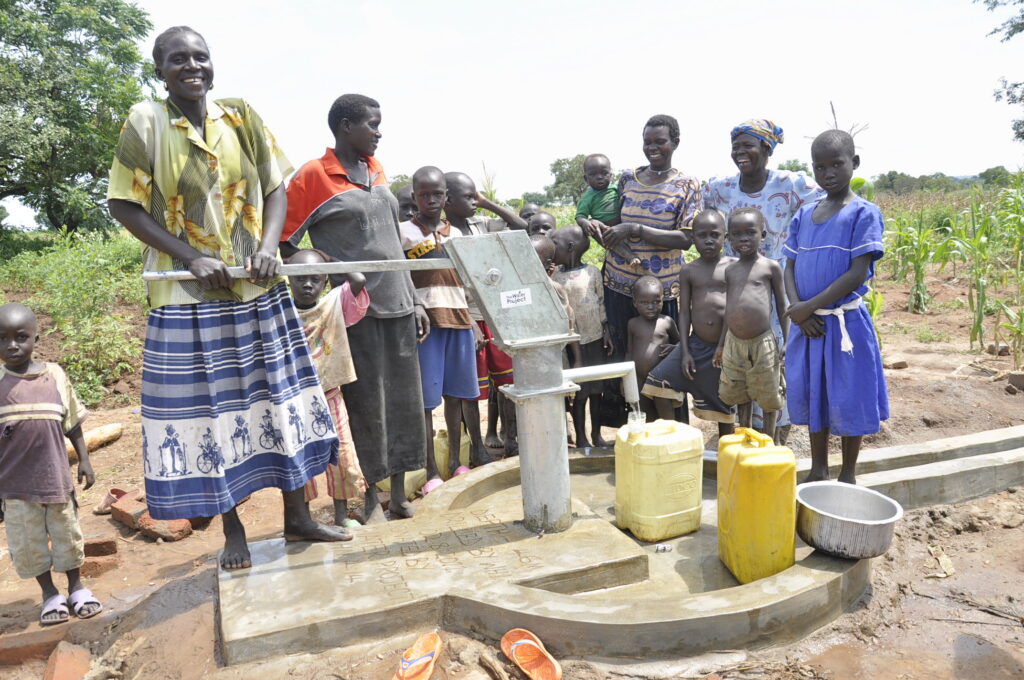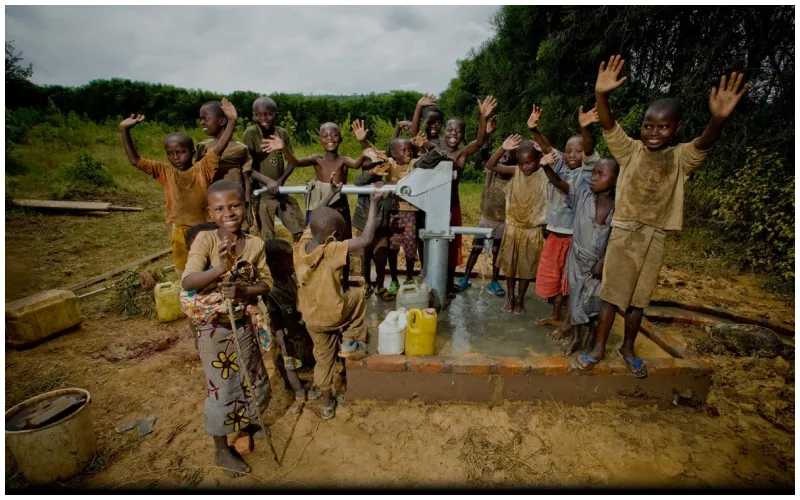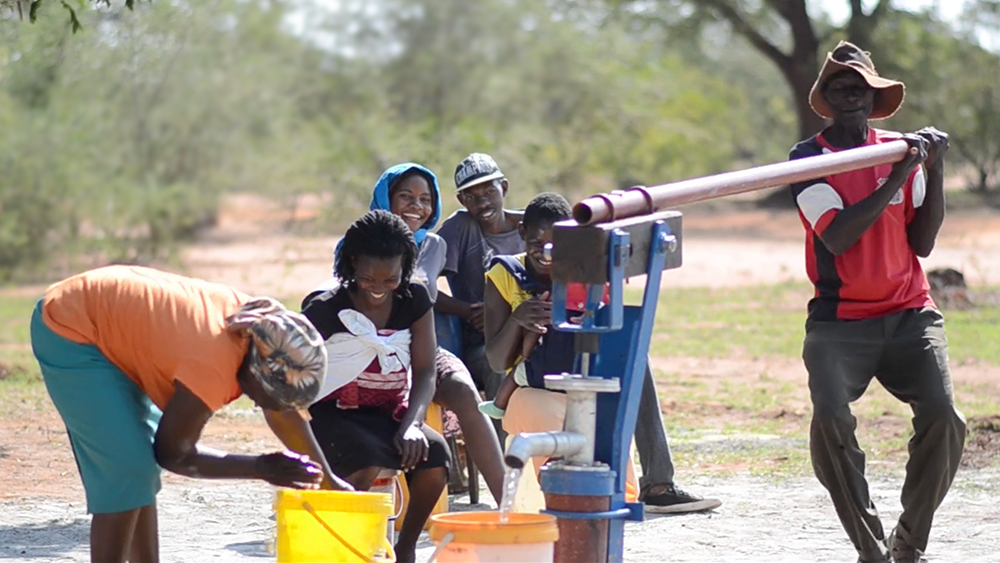
Clean water changes everything
Clean water is essential to life. It is estimated that 663 million people are without access which has a direct impact on health, education, and economic opportunity.
Donating to the construction of water systems in afflicted communities keeps children in school, protects the young and the old from disease, and empowers men and women to raise livestock and agriculture to sustain their needs.
Life revolves around water
The same thing that provides our lives with comfort is limiting the quality of life for millions worldwide — water.
Each year, 443 million school days are lost from water-related challenges and illnesses. Dirty drinking water kills 1000 children daily through diarrhea, typhoid, cholera, dysentery and other water-borne illnesses. That means more people die every year… Lack of access to the clean drinking water means a less prosperous community.
It’s impossible to overstate the importance of clean drinking water. Access to clean water keeps children in school, prevents early death, and reduces poverty by enabling communities to build an economy and agriculture for trade and sustenance.
WAHU, is on the ground in the most drought-stricken areas to provide vulnerable communities with clean drinking water. To ensure that WASH (Water, Sanitation, Hygiene) programs are tenable, we work with local partners who are more intimate with the challenges of their communities to find and implement practical and effective solutions.
Programs are only one part of the strategy. The second is staffing, training, and equipping programs with human resources on the ground. We invest in community members to manage and reinforce WASH programs and their infrastructure for lasting and sustainable change, maximizing donor impact and elevating the community for generations.
Construction of a dug well
Carrying out a borehole includes several important technical steps to guarantee the efficiency and quality of the work. Here is a detailed description of the 3 main steps:

Step 1: Drilling
1. Choice of interface and drilling technique
It is essential to select the best interface between the water body and the pump based on the characteristics of the terrain. Heterogeneous terrains require specific drilling techniques. For example, destructive or down-the-hole hammer drilling is effective on homogeneous terrain. This system uses a high-pressure pneumatic hammer to evacuate sediment to the surface and allows water inlets to be checked as progress is made.
2. Installation of the casing
This operation consists of installing a “formwork” casing to keep the surface terrain unstable. The casing can be steel or PVC depending on the characteristics of the soil. It must be of adequate diameter to allow drilling to continue.
3. Annular cementing
To make the casing watertight, an injection of fine cement is carried out. This aims to prevent surface water infiltration into the structure to avoid any pollution of deep waters. In the absence of cementing, a cementing umbrella is made on the final casing followed by the injection of clay balls.
Step 2: Continue drilling
1. Continuation of drilling
Drilling continues using a down-the-hole hammer to reach the aquifer zone. The tool is powered by high pressure compressed air to raise cuttings and water from aquifer areas. Before reassembling the tool, an analysis of the cuttings and a flow test are carried out.
2. Installing the Strainer
The tubing, made of PVC or steel, must be equipped with a strainer to allow water to penetrate and be captured by the pump.
3. Installation of the filter bed
If the water is loaded with sediment, a filter bed made up of calibrated ravines is installed to filter the water. A manhole is temporarily put in place to protect the drilling.
4. Cleaning the work
Once drilling is complete, thorough cleaning is carried out using the air lift method, which involves injecting air at high flow rates and high pressure to ensure the drilling is clean and ready for use. .
Step 3: Installation of pumping equipment and finishing touches
1. Pump selection and installation
After cleaning, the next step is to choose the right pump for the specific water needs. The pump can be manual or motorized, depending on the characteristics of the borehole and the intended use. It is installed at the bottom of the borehole and connected to the strainer to extract the water.
2. Pump testing and adjustments
Once the pump is installed, a functional test is carried out to verify its proper operation. Adjustments may be necessary to achieve optimal water flow.
3. Surface layout
When the drilling is operational, particular attention is paid to the development of the surface around the well. This may include constructing a coping or protective device to prevent contaminants from entering the borehole.
4. Drilling protection
To protect the borehole from outside contaminants, a cover or protective device is installed over the well. This can be a concrete structure or a specific cover to prevent contamination of the water source.
5. Water quality testing
Water quality tests are carried out to ensure its potability and compliance with health and safety standards. These tests can be carried out in the laboratory to check for the presence of potential contaminants.
6. Care and maintenance
Once the borehole is operational, a regular maintenance and upkeep plan is established to ensure the continued proper functioning of the pumping equipment and to guarantee the quality of the water extracted.

These steps complete the borehole construction process by ensuring that the equipment is operational, that the water is accessible and of good quality, and that protective measures are in place to preserve the water source.
Frequently Asked Questions
Can I choose the country where I want my well to be built?
While a donor may choose a water well in any African Countries, we cannot guarantee that we can fulfill requests for a specific country in two continents as we build wells where most needed. A donor may share their preference with us along with their receipt via email at info@wahu.co.za and we will try our best to fulfill their request; however, we cannot guarantee that they will be accommodated.
What is the cost of building a water well?
The price to build a water well is $7,000 in some other countries $12,500
Where do you build water wells?
W.A.H currently has water well projects in Congo ($7,000), Zambia ($7,000), Uganda ($12,500), Zimbabwe ($7,000) and South Africa ($7,000).
Can I add a name to the water well?
Yes, you may add an inscription of up to 45 characters to your water well. Please share your donation receipt along with your inscription with us via email at info@wahu.co.za
How long does it take for the water well to be built?
It takes between 1 to 2 months for well construction to be completed. This timeline excludes the pre- and post-construction phases, which should be noted. Please also note that unforeseen situations such as weather conditions, political unrest, and travel restrictions in the countries where we work can impact this timeline and may result in further delays..
Will I receive photos and videos of the well upon completion?
Yes, donors will receive photos of their completed wells and in some cases videos and construction photos of wells while they are in progress.
What is the lifespan of a water well?
Shallow water wells with hand pumps, which are most of the WAH’s water wells, have a lifespan of about 10-25 years.
We All Humans

You Deserve to Live a Better Life


No More Drinking Dirty Water


No more going far to get Water

